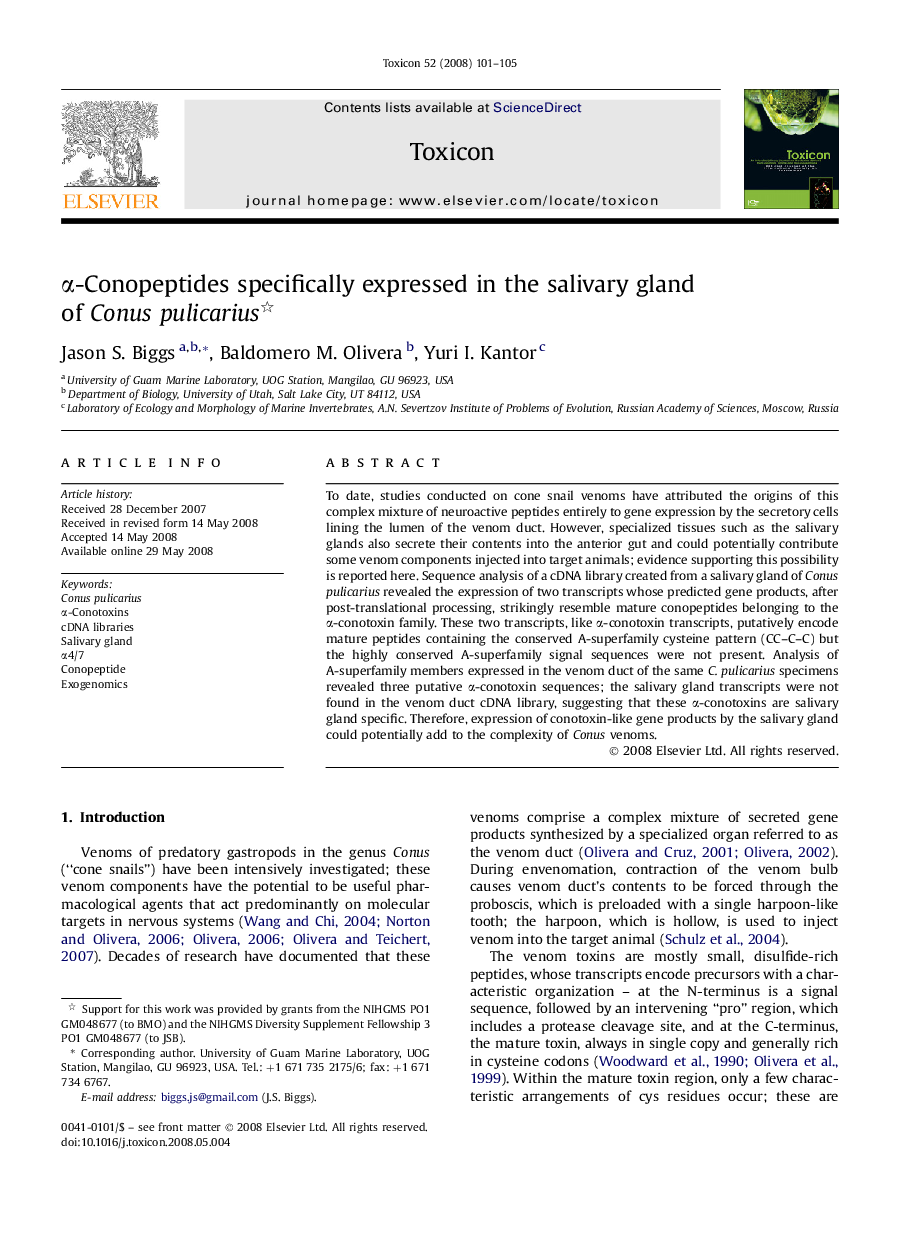| Article ID | Journal | Published Year | Pages | File Type |
|---|---|---|---|---|
| 2066595 | Toxicon | 2008 | 5 Pages |
To date, studies conducted on cone snail venoms have attributed the origins of this complex mixture of neuroactive peptides entirely to gene expression by the secretory cells lining the lumen of the venom duct. However, specialized tissues such as the salivary glands also secrete their contents into the anterior gut and could potentially contribute some venom components injected into target animals; evidence supporting this possibility is reported here. Sequence analysis of a cDNA library created from a salivary gland of Conus pulicarius revealed the expression of two transcripts whose predicted gene products, after post-translational processing, strikingly resemble mature conopeptides belonging to the α-conotoxin family. These two transcripts, like α-conotoxin transcripts, putatively encode mature peptides containing the conserved A-superfamily cysteine pattern (CC–C–C) but the highly conserved A-superfamily signal sequences were not present. Analysis of A-superfamily members expressed in the venom duct of the same C. pulicarius specimens revealed three putative α-conotoxin sequences; the salivary gland transcripts were not found in the venom duct cDNA library, suggesting that these α-conotoxins are salivary gland specific. Therefore, expression of conotoxin-like gene products by the salivary gland could potentially add to the complexity of Conus venoms.
